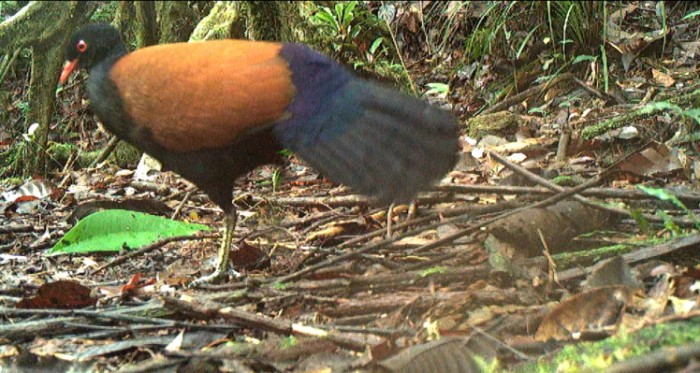The world is small.
The world is big.
It all depends on how you look at it.
When compared to the vastness of our solar system (never mind the universe!), our planet seems so tiny. Did you know that about 1,300 Earths could fit inside Jupiter?? Wow!
But to us humans who actually live on Earth, our home is huge!
It is a vast, fascinating world, still full of endless mysteries and surprises. That makes moments like this one really fun!
Scientists have just rediscovered an elusive bird species on Fergusson Island, which is a part of Papua New Guinea. The bird had even been feared extinct for about 140 years, which makes this an especially happy occasion.
Meet the black-naped pheasant-pigeon, a.k.a. the auwo!
Spoken of, rarely seen
The research team behind the video above had been working since 2019 to try to find the bird. And their story is one that changed as it went on.
It began when they heard rumours about an unknown ground-dwelling bird being seen by locals on the island. They called the bird 'auwo'.
Co-led by Jordan Boersma, of the Cornell Lab of Ornithology (bird science), the group was a combination of Indigenous Papua New Guinean and American researchers. Their goal was to try to find auwo and finally describe the bird for science.
They interviewed locals on the island, hoping to speak to anyone who had information on the bird. And due to the pandemic, their search was delayed many times. Then in September 2022, they finally captured auwo on film. The team was elated! And the excitement was only just beginning.
When Boersma got back home, he discovered that auwo was known by another name, too. It was also the black-napped pheasant-pigeon!
"It wasn't until after we returned to the U.S. that we realized that the species hadn't been observed since 1882," he said in an interview with LiveScience. This meant that auwo wasn't a new discovery as much as a rediscovery. Neat!
Unfortunately, the black-napped pheasant-pigeon is suspected to be an endangered species—one that likely only lives on Fergusson Island, which is just one-third the size of Prince Edward Island. But hopefully this new research will help raise awareness of the bird and allow its rainforest habitat to be properly protected.
 A still-image from a video taken of the long-lost bird. (Jason Gregg/American Bird Conservancy/YouTube)
A still-image from a video taken of the long-lost bird. (Jason Gregg/American Bird Conservancy/YouTube)









